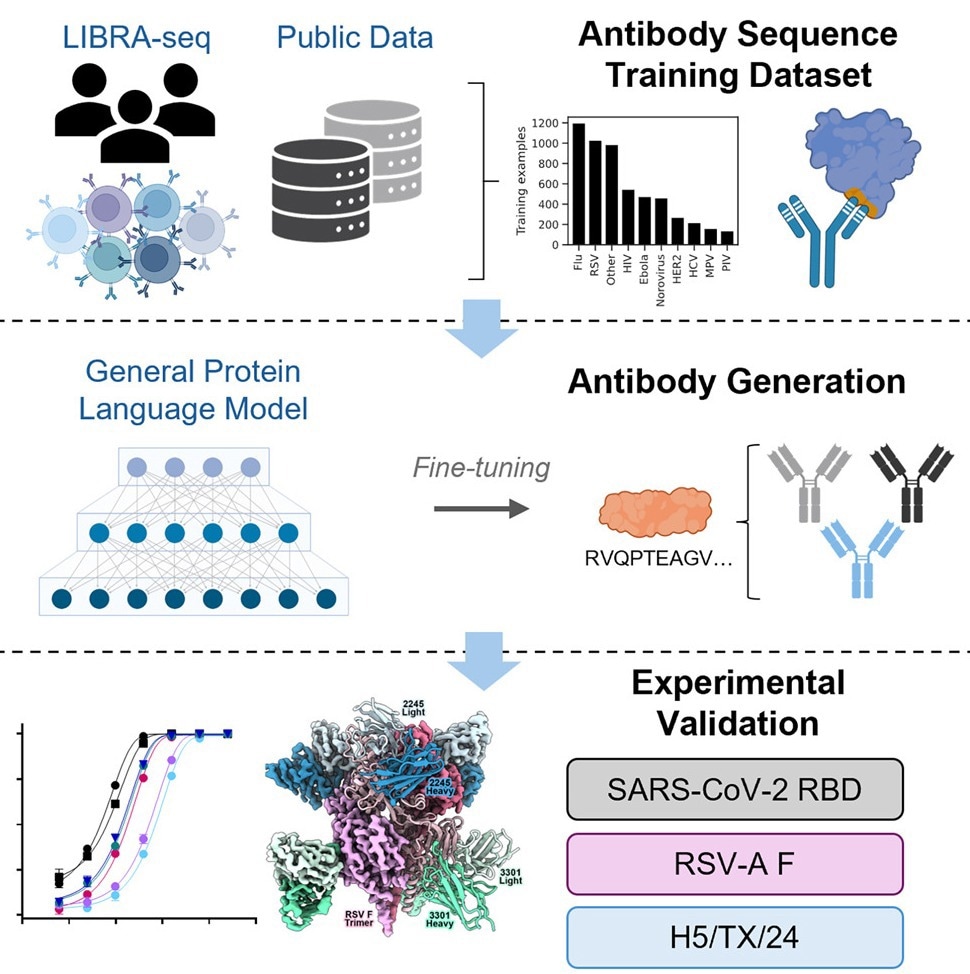Vanderbilt scientists unveil MAGE, an AI-powered protein language model that designs antibodies against new viral threats in record time, revolutionizing how future pandemics could be prevented.

Research: Generation of antigen-specific paired-chain antibodies using large language models
Artificial intelligence (AI) and "protein language" models can speed the design of monoclonal antibodies that prevent or reduce the severity of potentially life-threatening viral infections, according to a multi-institutional study led by researchers at Vanderbilt University Medical Center.
Study published in Cell highlights antiviral focus
While their report, published on November 4 in the journal Cell, focused on the development of antibody therapeutics against existing and emerging viral threats, including RSV (respiratory syncytial virus) and avian influenza viruses, the implications of the research are much broader, said the paper's corresponding author, Ivelin Georgiev, PhD.
Computational design of novel biologics
"This study is an important early milestone toward our ultimate goal - using computers to efficiently and effectively design novel biologics from scratch and translate them into the clinic," said Georgiev, professor of Pathology, Microbiology and Immunology, and director of the Vanderbilt Program in Computational Microbiology and Immunology.
Expanding applications across human diseases
"Such approaches will have significant positive impact on public health and can be applied to a broad range of diseases, including cancer, autoimmunity, neurological diseases, and many others," he said.
ARPA-H funding supports AI antibody research
Georgiev is a leader in the use of computational approaches to advance disease treatment and prevention. He is the principal investigator of an award of up to $30 million from the Advanced Research Projects Agency for Health (ARPA-H) to support the application of AI technology in developing novel antibodies with therapeutic potential.
Collaborative international research team
Perry Wasdin, PhD, a data scientist in the Georgiev lab, was involved in all aspects of the study and is first author of the paper.
The research team, which included scientists from around the country, Australia and Sweden, showed that a protein language model could design functional human antibodies that recognized the unique antigen sequencies (surface proteins) of specific viruses, without requiring part of the antibody sequence as a starting template.
How protein language models work
Protein language models are a type of large language model (LLM), which is trained on huge amounts of text to enable language processing and generation. LLMs provide the core capabilities of chatbots such as ChatGPT.
MAGE generates antibodies for emerging viruses
By training their protein language model MAGE (Monoclonal Antibody Generator) on previously characterized antibodies against a known strain of the H5N1 influenza (bird flu) virus, the researchers were able to generate antibodies against a related, but unseen, influenza strain.
Rapid response to global health threats
These findings suggest that MAGE "could be used to generate antibodies against an emerging health threat more rapidly than traditional antibody discovery methods," which require blood samples from infected individuals or antigen protein from the novel virus, the researchers concluded.
Vanderbilt research collaborators and funding
Other Vanderbilt co-authors were Alexis Janke, PhD, Toma Marinov, PhD, Gwen Jordaan, Olivia Powers, Matthew Vukovich, PhD, Clinton Holt, PhD, and Alexandra Abu-Shmais.
This research was funded, in part, by the Advanced Research Projects Agency for Health (ARPA-H) and National Institutes of Health grants R01AI175245, R01AI152693, and 1ZIAAI005003. The views and conclusions contained in this document are those of the authors and should not be interpreted as representing the official policies, either expressed or implied, of the U.S. Government.
Source:
Journal reference: